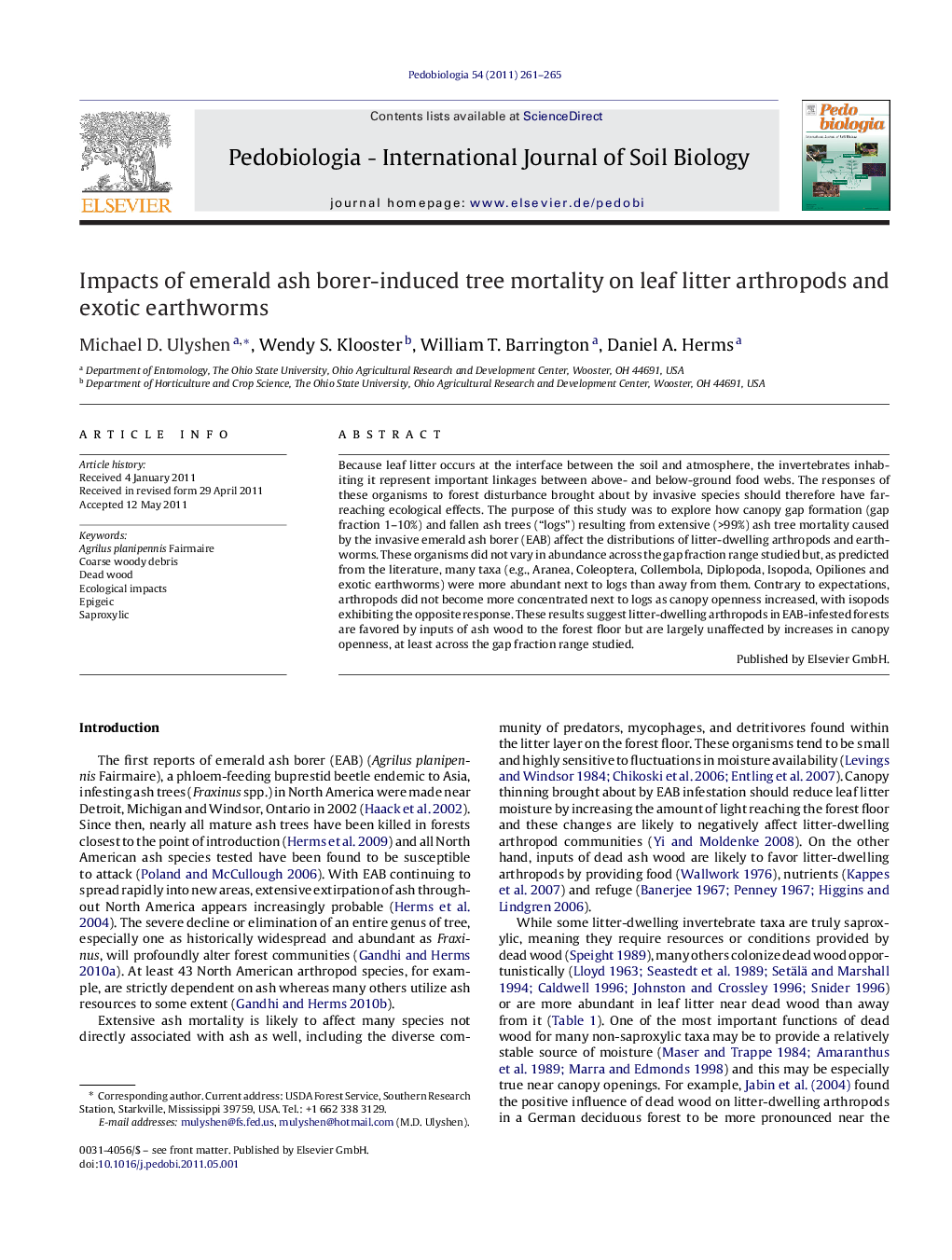| Article ID | Journal | Published Year | Pages | File Type |
|---|---|---|---|---|
| 2061462 | Pedobiologia | 2011 | 5 Pages |
Because leaf litter occurs at the interface between the soil and atmosphere, the invertebrates inhabiting it represent important linkages between above- and below-ground food webs. The responses of these organisms to forest disturbance brought about by invasive species should therefore have far-reaching ecological effects. The purpose of this study was to explore how canopy gap formation (gap fraction 1–10%) and fallen ash trees (“logs”) resulting from extensive (>99%) ash tree mortality caused by the invasive emerald ash borer (EAB) affect the distributions of litter-dwelling arthropods and earthworms. These organisms did not vary in abundance across the gap fraction range studied but, as predicted from the literature, many taxa (e.g., Aranea, Coleoptera, Collembola, Diplopoda, Isopoda, Opiliones and exotic earthworms) were more abundant next to logs than away from them. Contrary to expectations, arthropods did not become more concentrated next to logs as canopy openness increased, with isopods exhibiting the opposite response. These results suggest litter-dwelling arthropods in EAB-infested forests are favored by inputs of ash wood to the forest floor but are largely unaffected by increases in canopy openness, at least across the gap fraction range studied.
